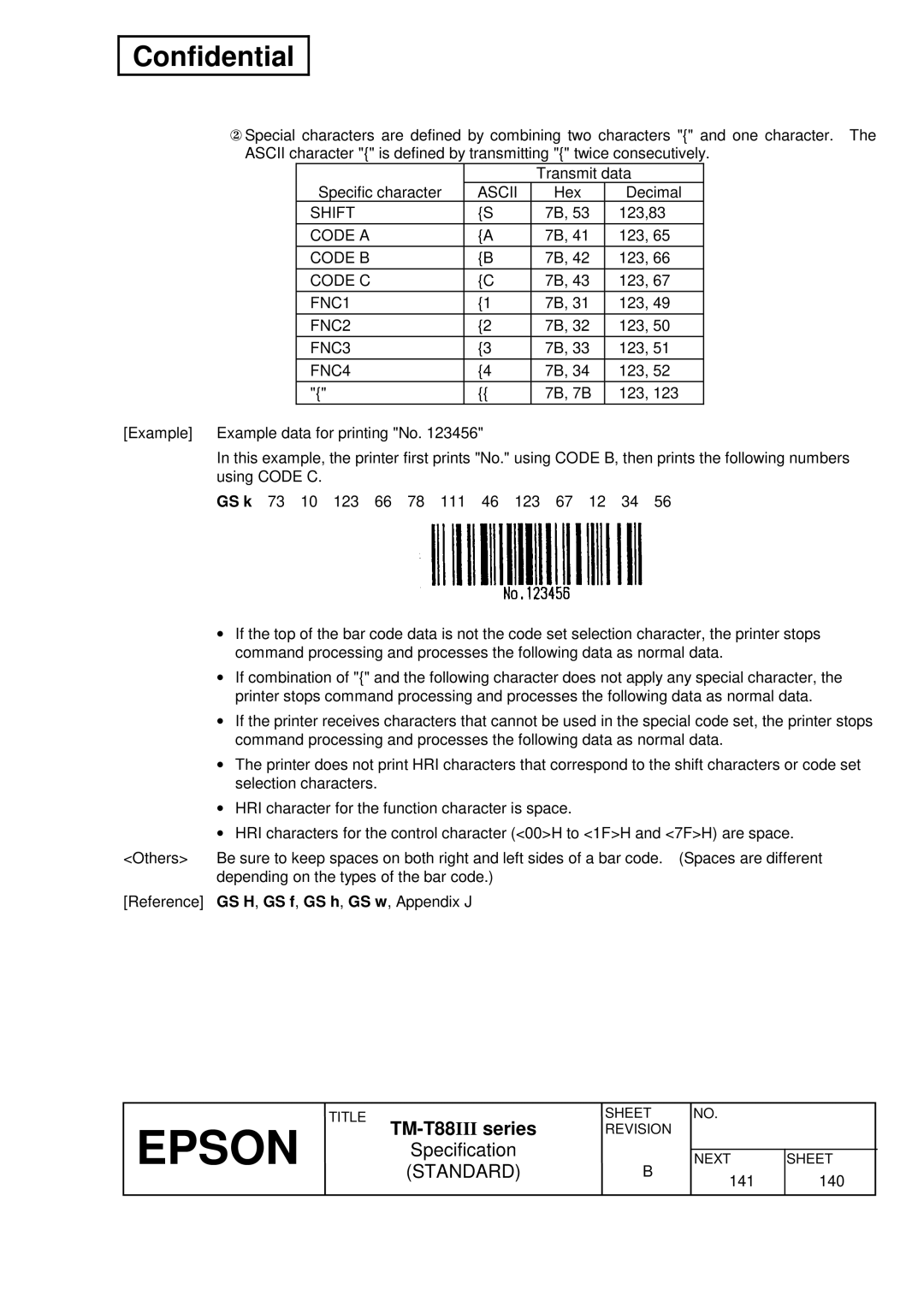
Confidential
②Special characters are defined by combining two characters "{" and one character. The ASCII character "{" is defined by transmitting "{" twice consecutively.
Specific character |
| Transmit data | |
ASCII | Hex | Decimal | |
SHIFT | {S | 7B, 53 | 123,83 |
CODE A | {A | 7B, 41 | 123, 65 |
CODE B | {B | 7B, 42 | 123, 66 |
CODE C | {C | 7B, 43 | 123, 67 |
FNC1 | {1 | 7B, 31 | 123, 49 |
FNC2 | {2 | 7B, 32 | 123, 50 |
FNC3 | {3 | 7B, 33 | 123, 51 |
FNC4 | {4 | 7B, 34 | 123, 52 |
"{" | {{ | 7B, 7B | 123, 123 |
[Example] Example data for printing "No. 123456"
In this example, the printer first prints "No." using CODE B, then prints the following numbers using CODE C.
GS k 73 10 123 66 78 111 46 123 67 12 34 56
• If the top of the bar code data is not the code set selection character, the printer stops
| command processing and processes the following data as normal data. |
| • If combination of "{" and the following character does not apply any special character, the |
| printer stops command processing and processes the following data as normal data. |
| • If the printer receives characters that cannot be used in the special code set, the printer stops |
| command processing and processes the following data as normal data. |
| • The printer does not print HRI characters that correspond to the shift characters or code set |
| selection characters. |
| • HRI character for the function character is space. |
| • HRI characters for the control character (<00>H to <1F>H and <7F>H) are space. |
<Others> | Be sure to keep spaces on both right and left sides of a bar code. (Spaces are different |
| depending on the types of the bar code.) |
[Reference] GS H, GS f, GS h, GS w, Appendix J
EPSON | TITLE |
| SHEET | NO. |
|
| REVISION |
|
| ||
| Specification |
|
|
| |
|
| NEXT | SHEET | ||
| (STANDARD) | B | |||
|
|
|
| 141 | 140 |
